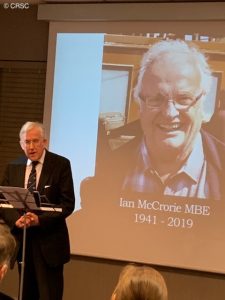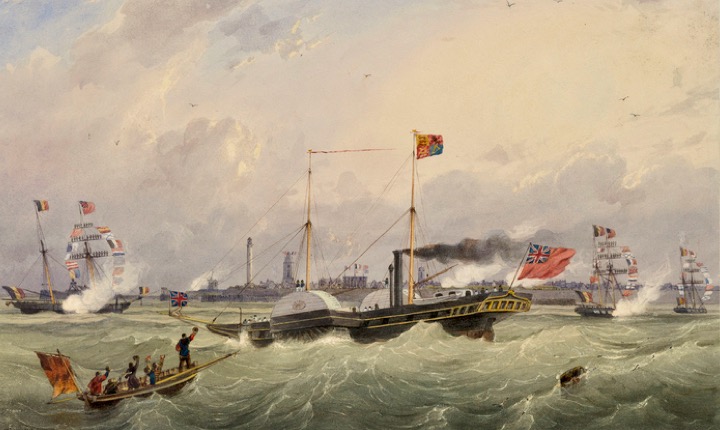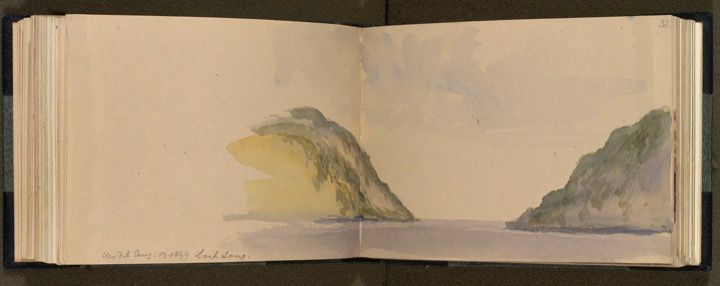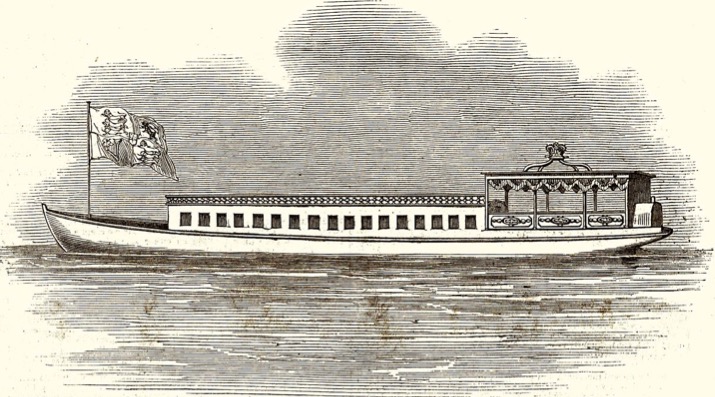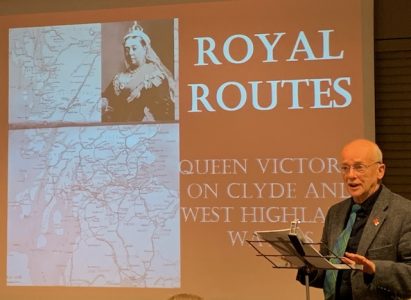
Colin Tucker gave a concise and illuminating talk about Queen Victoria’s five visits to Clyde and West Highland waters
The final CRSC gathering of 2019 featured an enthralling talk by Colin Tucker on Queen Victoria’s five visits to the Clyde and West Highlands, starting with the extensive 1847 trip that gave rise to the romantic slogan ‘The Royal Route’. The meeting also gave Club members an opportunity collectively to pay tribute to one of our most distinguished members, Ian McCrorie, who had died just six days previously. Report by Stuart Craig.
A palpable air of reflection permeated the start of CRSC’s meeting at Jurys Inn on Wednesday 11 December. There was a vacant seat halfway down the room, to which the eyes of Club Treasurer Billy Tomlinson were continually drawn as he addressed those gathered with a moving and deeply personal tribute to the late Ian McCrorie.
“I’ve known Ian all my CRSC life,” said Billy, before adding “he was a giant of the Clyde River Steamer Club.” Nobody could disagree with that.
On to the main business of the evening, and up stepped Colin Tucker with his presentation entitled “Royal Routes – Queen Victoria on the Clyde and West Highland Waters”.
Colin’s concise and measured tones brought a much needed brightness into the room, as he described the five sea excursions that Victoria made to our west coast. Colin explained that although the current Queen escaped to Hebridean waters without pomp and circumstance, in Victoria’s day these royal voyages were heralded with much publicity.
In the first of her five trips, in August 1847, Her Majesty embarked on a veritable peregrination from the Isle of Wight to the Clyde, arriving on the upper Firth a day late and causing all sorts of confusion to the operators of dozens of Clyde excursion steamers.
In those days the public didn’t get to see their monarch too often and numerous steamer companies jumped at the chance to facilitate just that – and make a few bob in the process. There were 22 adverts in the Glasgow Herald alone for excursions to see the Queen. Steamers left from Glasgow, Ayr, Largs, Arrochar and other piers, to head downriver (or upriver) to meet the royal yacht Victoria and Albert (a paddler), Fairy (a screw steamer) and various other ships in ‘the Royal Squadron’, as it was called.
One excursion steamer set off at 4am from Glasgow. Another, Thetis, sailed all the way to Loch Ryan, to try to deliver an official message of welcome to Her Majesty, only to be sent back to await the Royal Squadron’s delayed arrival at the Tail of the Bank a day later.
On 17 August the Royal Squadron reached Ailsa Craig, where Victoria noted in her diary that the ship’s whistle was sounded so that the incumbent gannets would be sufficiently roused for Prince Albert to shoot some of them!
The Queen finally stepped ashore at Dumbarton, before continuing onwards to Ardrishaig (still followed by steamers), Oban, Staffa, Tobermory and Fort William.
Shorter, and somewhat less publicised, excursions took place in 1849 and 1869. Victoria undertook the latter alone as Albert had succumbed to typhoid fever seven years earlier. In 1873 she was back again, this time sailing along the Caledonian Canal on Gondolier, attended by David Hutcheson and David MacBrayne.

William Clark’s celebrated painting of the Royal Squadron at Greenock in 1847 (Copyright McLean Museum and Art Gallery, Inverclyde Council)
Victoria’s final Clyde adventure was a more ephemeral affair. In August 1888 she disembarked from a train at Renfrew and sailed upriver to Glasgow on Victoria and Albert (the second of that name) to “…launch a warship.”
Colin had been asked to address CRSC at fairly short notice, and deserves great credit for his choice of subject — bringing our attention to such an interesting and well-researched topic. He had evidently trawled through dozens of newspaper accounts, as well as Queen Victoria’s diaries, to glean as much as he could about the royal visits. His delivery was given in his usual clear brogue, and we thank him for sharing it with us.
His finishing sentence quoted the Queen as saying: “I am quite sorry I have to leave our good ship….With the exception of a little fog it has been delightful and I shall look back on this trip with the greatest pleasure.”
Listening to those words it struck me that perhaps our dear friend Ian McCrorie would have uttered the same words if he had wanted to sum up his own fruitful life.
● ● ● ● ● ● ● ●
CRSC is delighted to announce that Douglas Allan has agreed to take over responsibility for compiling and editing the annual Review, starting on 1 January 2020. The Club is intending to publish the 2018 Review in the early Spring, and the 2016, 2017 and 2019 Reviews in the course of the coming year.
If you have not already renewed your CRSC subscription for 2019-20, please do so now by clicking here.

Crowds gather at the Broomielaw in the hope of joining one of the trips to view the royal party in 1847
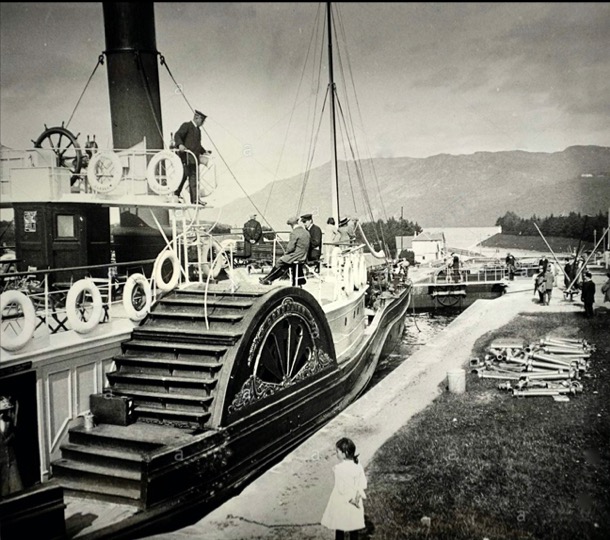
On one of her later visits Queen Victoria sailed along the Caledonian Canal on the 1866 Hutcheson/MacBrayne paddler Gondolier, seen here at Fort Augustus

Club members Douglas Allan (left) and Graeme Dunlop (right) congratulate Colin Tucker (centre) on his enthralling talk at Jurys Inn on 11 December 2019. From 1 January 2020 Douglas will take over responsibility for compiling, editing and producing one of CRSC’s key publications, the annual Review.
Published on 15 December 2019












